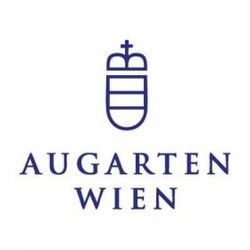
Фарфоровая мануфактура Аугартен ( Porzellanmanufaktur Augarten) - первая в империи Габсбургов фарфоровая мануфактура, располагавшаяся в предместьях Вены. Венская фарфоровая мануфактура, основанная в 1718 году, является второй, после Мейсенской, старейшей мануфактурой в Европе. Сегодня, как и в былые времена, фарфор изготавливается и расписывается вручную. Благодаря этому каждый экземпляр становится уникальным произведением искусства.
С самого дня основания мануфактуры Аугартен дизайн фарфоровых изделий создается в сотрудничестве с известными художниками. Художники всех эпох создавали настоящие шедевры - более 25 000 изделий демонстрируют широкий спектр творческих стилей, от барокко до модерна.
История венского фарфора началась в 1718 году, когда, всего через восемь лет после того, как «белое золото» было изобретено Йоганном Фридрихом Беттгером в 1709 году, открылась Венская фарфоровая мануфактура. С тех пор Венская фарфоровая мануфактура получила всемирную известность.
25 мая 1718 года Император Карл VI подписал указ, дарующий «особые привилегии» Клаудиусу Инноцентусу дю Паркье (Claudius Innocentus du Parquier) и исключительное право на изготовление фарфора в землях Австрийской Короны. Фарфор для Императорского двора и придворных изготавливался в районе, в котором сейчас находится венская улица Porzellangasse. В наши дни этот период изготовления фарфора в стиле позднего барокко называется «Период дю Паркье».
Во времена рококо Императрица Мария Терезия сделала частую компанию собственностью Империи. Фарфор «Имперской государственной Мануфактуры Вена» с тех пор клеймился окаймленным щитом, гербом Бабенбергов. В этот период были созданы знаменитые жанровые сцены в стиле рококо “after Watteau” (по Ватто) - сегодня они весьма высоко ценятся среди коллекционеров.
Под руководством Конрада Зоргеля фон Зоргенталя (Conrad Sorgel von Sorgenthal) Венская фарфоровая мануфактура стала известна за пределами Австрии своим фарфором в стиле нео-классицизм. Уникальные рельефные декоры фарфора с позолотой и качество росписи, остающиеся непревзойденными и в наши дни, подарены этим периодом.
Война с Францией привела Венскую фарфоровую мануфактуру на грань разорения, а Венский Конгресс в начале XIX века дал развитию производства венского фарфора толчок вперед. Многие известные люди того времени, включая Императора России Александра I и Короля Пруссии, посещали Венскую фарфоровую мануфактуру. Венский фарфор стал дорогим, с благодарностью принимаемым подарком.
Нарождавшийся средний класс эпохи также ценил чистоту линий Венского фарфора. Очаровательные, почти миниатюрные букеты и разбросанные по белой поверхности венского фарфора цветочные узоры, часто в сочетании с просто оформленной каймой фарфорового изделия запечатлели этот период в самых его восхитительных формах. Один из наиболее популярных сервизов из фарфора – в форме Шуберт - был создан здесь. В результате индустриализации и быстро растущей конкуренции (особенно со стороны Богемских фабрик, освоивших массовое производство), в 1864 году императорский дом счел необходимым закрыть Венскую фарфоровую мануфактуру и передать ее в музейное управление. Когда современный Дворец Аугартен открылся вновь в 1923 году, венский фарфор взял новые высоты – теперь уже в стиле Венского ар деко.







